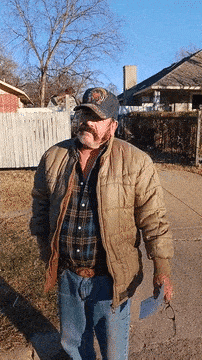“Texas Tough” McKay Law
Texas Delivery Drone Accident Lawyer
NO FEES UNLESS WE WIN!
We only get paid when you get paid.
Receive Immediate Medical Care
Get the medical attention you need with no out-of-pocket cost in most cases.
24/7 Access To Us
We are here for you 24/7 so you can focus on healing.
Client Satisfaction
McKay Law has a reputation to be proud of with 300+ 5 star Google Reviews.
Texas Delivery Drone Accident Attorney | McKay Law
Navigating the aftermath of a delivery drone accident can be daunting, but McKay Law stands out as a trusted advocate for victims in Texas. With their extensive experience in handling complex drone-related accident cases, McKay Law has become a go-to resource for individuals seeking justice in this emerging area of personal injury law. Their team understands the unique challenges posed by evolving drone technology, such as determining liability, assessing damages, and interpreting rapidly changing regulations. This expertise enables them to craft strong, persuasive cases that hold responsible parties accountable.
McKay Law is deeply committed to fighting for the rights of drone accident victims. They know that these incidents can lead to life-altering injuries, property damage, and emotional distress, leaving victims overwhelmed and uncertain about the future. By taking a personalized approach to each case, the firm ensures that every client receives the care and attention they deserve. Their unwavering dedication to securing fair compensation reflects their belief that no victim should bear the financial and emotional burden of a drone-related accident alone.
To make the legal process as accessible as possible, McKay Law offers free consultations to prospective clients. This allows victims to understand their rights and options without any upfront financial commitment. The firm’s approachable and empathetic team aims to provide clarity and peace of mind during what is often a confusing and difficult time. With McKay Law in your corner, you’ll have a partner who is not only skilled in legal advocacy but also genuinely invested in protecting your future.
Understanding Delivery Drone Accidents in Texas
1. Statistical Data or Trends
- Amazon’s drone delivery program in Texas (College Station) has faced challenges, including crashes and operational pauses. For example:
- Two MK30 drones crashed during test flights in rainy weather in December 2024.
- Amazon temporarily halted drone deliveries in January 2025 to address software issues related to altitude sensors.
- Amazon aims to deliver 500 million packages annually by drone by the end of the decade, but progress has been slow.
2. Case Studies or Incidents
- College Station, Texas: Residents raised concerns about noise, privacy, and property values due to Amazon’s drone operations. Complaints led to Amazon adopting quieter drones and reducing flight frequency.
- Crash Incidents:
- A software issue caused two MK30 drones to crash in December 2024, with one catching fire.
- A mid-air collision occurred during a test in September 2024 due to a pilot error.
- Amazon has faced multiple crashes during testing, which the company attributes to pushing drone systems to their limits.
3. Legal, Regulatory, or Safety Aspects
- The Federal Aviation Administration (FAA) plays a key role in regulating drone operations. Amazon had to pause operations until receiving FAA approval for software updates.
- Texas laws limit local governments’ ability to regulate drones, leaving residents with fewer options to address concerns.
- Amazon’s drones are designed to comply with FAA noise and safety standards, but public pushback has influenced operational decisions.
Lindsey McKay Takes Texas Delivery Drone Accident Cases Seriously
The rapid rise in drone technology has revolutionized how goods are transported, making delivery more efficient and sometimes even exciting. However, with innovation comes new risks—and delivery drones have introduced a host of potential dangers. While they promise convenience, delivery drones may cause accidents with devastating consequences, from personal injuries to property damage. Navigating the legal aftermath of these incidents can be daunting, which is why Texans turn to Lindsey McKay, an accomplished attorney with a deep understanding of delivery drone accident cases.
Specializing in the complexities of drone-related incidents, Lindsey McKay offers the expertise victims need to fight for justice and fair compensation. Here’s a closer look at why having a seasoned legal advocate is critical when dealing with delivery drone accidents in Texas.
Why Delivery Drone Accidents Are Legally Complex
Delivery drone accidents often require more investigation and expertise compared to typical personal injury cases. One drone malfunction can result in a variety of outcomes, such as a drone colliding with someone, dropping a package negligently, or damaging vehicles or properties. Each scenario raises unique legal challenges. Below, we’ll explore key factors that make these cases especially intricate.
1. Determining Liability
One of the most challenging aspects of drone accident cases is figuring out who is at fault. Liability might lie with several parties, including but not limited to:
- Drone Operators: Human error, such as failing to follow safety protocols, can lead to accidents.
- Delivery Companies: Some corporations neglect proper employee training or equipment maintenance.
- Manufacturers: Faulty drone hardware or software can malfunction, causing catastrophic outcomes.
These cases often involve multiple layers of accountability, requiring a meticulous approach to assign responsibility accurately.
2. Navigating FAA Regulations
The Federal Aviation Administration (FAA) governs drones in U.S. airspace, but regulations surrounding delivery drones are still evolving. For drones used in deliveries, specific rules govern their operation, such as flight altitude restrictions, registration requirements, and limits on proximity to people and infrastructure.
Failure to adhere to these regulations would mean negligence on part of the operator or delivery company. Lindsey McKay’s in-depth understanding of FAA rules positions her as a fierce advocate for uncovering violations and holding negligent parties accountable.
3. Handling Emerging Technology
Drone technology is still growing, making accidents linked to emerging tech particularly hard to litigate. Often, the physical or digital trail of evidence—such as drone flight logs, geofencing compliance, and GPS technology—is highly technical in nature. Without a lawyer well-versed in these complexities, critical evidence could be overlooked.
Leveraging her familiarity with the intersection of technology and the law, Lindsey McKay ensures evidence is gathered and interpreted effectively.
Why Victims Need Experienced Legal Representation
If you’ve been injured in a delivery drone-related accident, you may face medical expenses, lost wages, property damage, and ongoing pain. These cases often involve large corporations backed by legal teams intent on minimizing compensation. That’s why working with an attorney like Lindsey McKay is absolutely indispensable.
1. Proven Expertise in Drone Accident Claims
Lindsey McKay has built her practice on ensuring victims of drone accidents aren’t left struggling for justice. Backed by years of experience fighting for accident victims across Texas, she’s well-equipped to take on powerful corporations and their insurers. From investigating the incident to negotiating settlements, Lindsey ensures every legal avenue is explored to secure the compensation you deserve.
2. Empathy Combined with Aggressive Advocacy
A drone accident can be a distressing experience. Lindsey McKay not only prioritizes results but also provides compassionate guidance. From initial consultations to courtroom proceedings, her team makes sure victims feel supported throughout their legal fight.
3. Comprehensive Case Handling
Lindsey McKay thoroughly investigates all aspects of a case to build a rock-solid claim. This includes gathering eyewitness statements, analyzing drone operation records, consulting with technology experts, and scrutinizing FAA compliance. This comprehensive approach ensures no stone is left unturned when building your case.
Common Types of Drone Accident Cases
To better understand how Lindsey McKay can assist you, consider the variety of cases she handles, including but not limited to:
- Pedestrian Injuries: Accidents where a drone collides with someone on the ground.
- Package Mishaps: When a drone improperly drops or mishandles its load, causing damage or injury.
- Property Damage: Incidents where drones collide with homes, vehicles, or other structures.
- Vehicle Collisions: Drones interfering with drivers or causing traffic accidents.
No matter the circumstances, Lindsey McKay is prepared to devise a legal strategy tailored to your case’s unique details.
What You Can Do After a Drone Accident
If you’ve been involved in a delivery drone accident, taking the right steps immediately can strengthen your case. Here’s how you can protect yourself:
- Seek Medical Attention: Even if injuries seem minor, get checked by a medical professional. Documentation is vital for your case.
- Document Evidence: Take photos or videos of the accident scene and any injuries or damage caused.
- Report the Incident: Notify law enforcement or relevant authorities.
- Consult an Attorney Promptly: Time is of the essence, as evidence can disappear. Lindsey McKay offers free consultations to evaluate drone accident cases.
With proper legal counsel, you’ll be better positioned to fight for the fair resolution you deserve.
Future of Drone Regulations
As delivery drones become more common, the FAA is expected to update and expand its regulations to address new safety, privacy, and operational concerns. Potential changes may introduce stricter requirements for pilot certification, expanded no-fly zones, enhanced safety protocols, and more detailed reporting following incidents. These evolving rules could significantly impact how companies deploy drones and how cases involving drone accidents are litigated.
For victims, staying informed about regulatory updates is essential, as changes in the law can affect liability, the claims process, and available compensation. Lindsey McKay closely monitors these developments to ensure her clients’ cases benefit from the latest legal standards—helping them pursue justice as the legal landscape shifts.
Contact Lindsey McKay Today
Handling the legal aftermath of a delivery drone accident requires experience, dedication, and an understanding of this rapidly changing field, and Lindsey McKay has all three. From addressing liability concerns to interpreting FAA regulations, Lindsey’s passion for justice ensures no detail is overlooked in your case.
If you or a loved one is dealing with injuries or damages from a delivery drone accident, don’t wait. Contact Lindsey McKay today for a free consultation and take the first step toward getting the compensation you need to move forward.
What Are The Most Common Types Of Delivery Drone Accident Injuries In Texas?
Delivery drone accidents can lead to various types of injuries, especially as drones become more prevalent in urban and suburban areas. In Texas, the most common types of delivery drone accident injuries might include:
Whiplash and Neck Injuries: Sudden impact can cause the neck to jerk violently, leading to soft tissue damage, whiplash, or even more severe spinal injuries.
Back and Spinal Cord Injuries: These can range from herniated discs to severe spinal cord damage, potentially resulting in paralysis.
Head and Brain Injuries: Traumatic brain injuries (TBIs) are common in high-impact collisions, leading to concussions, memory loss, or long-term cognitive issues.
Broken Bones and Fractures: The force of a collision can cause fractures in arms, legs, ribs, and other parts of the body.
Internal Injuries: Damage to internal organs, such as the liver, spleen, or lungs, can occur due to the impact or crushing injuries.
Burns: If the accident involves a fire or explosion, victims may suffer from severe burns requiring extensive medical treatment.
Cuts and Lacerations: Broken glass, metal, or debris can cause deep cuts, leading to scarring or infections.
Amputations: In severe cases, limbs may be crushed or severed, resulting in amputation.
Psychological Injuries: Beyond physical harm, victims may experience PTSD, anxiety, or depression following a traumatic accident.
Fatal Injuries: Unfortunately, some commercial vehicle accidents result in fatalities due to the sheer force and impact involved.
The severity of these injuries often depends on factors like the size and weight of the drone, the height from which it fell, and the speed at which it was traveling.
What Damages Can I Receive from a Texas Delivery Drone Incident Claim?
Delivery drones are becoming increasingly common, offering a fast, efficient, and convenient way to transport goods. From groceries to online purchases, these aerial vehicles are revolutionizing the delivery industry. However, as the use of delivery drones grows, so does the risk of accidents and injuries. A malfunctioning drone or improper operation can result in property damage, physical injuries, and even emotional distress. If you or someone you know has been injured by a delivery drone in Texas, it’s important to know that you may have the right to pursue a claim for damages. But what exactly does this include, and how can it help?
This blog will outline the types of compensation you might be entitled to. These typically fall into three categories: economic damages, non-economic damages, and, in some cases, punitive damages. Economic damages cover measurable financial losses, such as medical expenses, lost wages, and property damage. Non-economic damages address intangible losses, such as pain, suffering, or emotional distress caused by the injury. Punitive damages, while less common, may be awarded in cases where the drone operator’s negligence or misconduct was particularly egregious and aimed at deterring similar behavior in the future.
Understanding the types of damages you can claim is essential to fully protecting your rights and ensuring you receive fair compensation after a delivery drone injury. Seeking legal guidance can also help you navigate the often complex process of filing a claim. Here’s a closer look at these categories of compensation and how they may apply to your case.
1. Economic Damages
Economic damages are intended to compensate you for measurable, out-of-pocket expenses you incurred due to the injury. These damages are calculated based on actual costs and losses and typically include:
a. Medical Expenses
If you’ve sustained injuries, medical treatment is often the largest immediate expense. Economic damages in this category can include costs such as:
- Emergency care and hospital bills
- Doctor consultations and specialist fees
- Cost of surgeries, medications, and medical devices
- Physical therapy and rehabilitation
- Future medical expenses for ongoing care related to the injury
For example, if a malfunctioning drone crashes into you, causing a broken arm, your medical expenses could encompass the cost of the ambulance ride, X-rays, a cast, follow-up visits, and physical therapy.
b. Lost Wages
Serious injuries sometimes prevent victims from working, leading to a loss of income. Economic damages can include compensation for:
- Income you missed while recovering
- Lost bonuses or benefits tied to employment
- Reduced earning capacity if your injuries permanently affect your ability to work
Imagine a situation where a delivery drone collides with a bicyclist, severely injuring their back. If they can’t perform their job for months or must move to a lower-paying role due to physical restrictions, lost wages would be part of the claim.
c. Property Damage
While injuries are the primary concern, you may also have property damage to account for. For example, if a drone crashes into your car or breaks your phone, the repair or replacement costs can be claimed as economic damages.
2. Non-Economic Damages
Non-economic damages address the intangible effects of an injury, which can still significantly impact your quality of life. Though harder to calculate, these damages are crucial for covering emotional and psychological tolls caused by the accident.
a. Pain and Suffering
Pain and suffering damages compensate for the physical discomfort and emotional trauma caused by an injury. For instance, if a drone injury leaves you in chronic pain or emotionally distressed, such impacts could be taken into account during a claim.
b. Emotional Distress
A frightening or severe incident like a drone crash can cause long-term mental health challenges such as anxiety, PTSD, or depression. These effects may be compensable as non-economic damages.
c. Loss of Enjoyment of Life
Severe injuries can limit your ability to engage in activities you once loved—whether that’s exercise, hobbies, or spending quality time with loved ones. Damages for loss of enjoyment of life are intended to compensate for these kinds of losses.
d. Loss of Consortium
If a drone injury affects your relationship with a spouse or family members, such as by limiting intimacy or putting strain on family dynamics, damages may be awarded for loss of consortium.
3. Punitive Damages
While economic and non-economic damages are designed to compensate victims, punitive damages are intended to punish the wrongdoer and deter similar behavior in the future. These damages are only awarded in situations involving gross negligence or willful misconduct.
When Are Punitive Damages Applicable?
If the delivery company or drone operator acted recklessly or ignored known risks, the court might award punitive damages. For example, if a company knowingly deployed drones with defective navigation systems that had a history of causing accidents, punitive damages might be pursued.
Factors That Influence the Value of Your Claim
The total damages you can receive depend on various factors, such as:
- Severity of Injuries: More severe or permanent injuries generally lead to higher compensation.
- Evidence of Negligence: Demonstrating that the drone operator or company acted negligently is crucial to building a strong case.
- Impact on Life: The more your injury affects your daily life, work, and well-being, the higher your likely compensation.
Steps to Protect Your Rights
If you’ve been injured by a delivery drone, taking the right steps early on can strengthen your claim. Consider the following:
- Seek medical attention immediately to document your injuries.
- Report the incident to authorities and obtain an official record.
- Gather evidence, such as photos, videos, and eyewitness accounts.
- Identify the drone operator or company responsible.
- Consult with an experienced personal injury lawyer familiar with Texas law.
Final Thoughts
Getting injured by a delivery drone can be a traumatic and costly experience. Fortunately, Texas law provides mechanisms for seeking compensation to help cover your economic losses, emotional impact, and more. Whether it’s medical bills, lost wages, or intangible losses like pain and suffering, you have the right to pursue fair damages for the harm you’ve suffered.
If you or a loved one has been injured by a delivery drone, don’t fight this battle alone. Seek a consultation with an experienced personal injury attorney who can assess your claim and guide you through the legal process. Protecting your rights starts with understanding them, and that includes knowing the compensation you deserve after an accident involving delivery drones.
The Texas Tough Difference
See why so many others choose McKay Law, PLLC
With over 300 five-star reviews, McKay Law, your local Personal Injury Law Firm has earned the trust and gratitude of our clients. Every case we handle is unique, and every client’s story matters. Don’t just take our word for it—hear directly from our clients about their experiences and why they confidently recommend us to others.
Delivery Drone Accident FAQs
A delivery drone accident occurs when an unmanned aerial vehicle (UAV) used for delivering goods experiences a malfunction, collision, or crash, potentially causing damage to property, injury to people, or disruption to services.
- Technical Failures: Issues with hardware, software, or battery systems.
- Weather Conditions: Strong winds, rain, or extreme temperatures.
- Pilot Error: Mistakes made by the operator (if manually controlled).
- Obstacles: Collisions with trees, buildings, or power lines.
- Interference: Signal loss or hacking of the drone's control system.
While delivery drones are still a relatively new technology, accidents are rare but not unheard of. Companies invest heavily in safety measures, but as the technology scales, occasional incidents may occur.
In most cases, the company operating the drone is liable for damages. Customers or property owners can report the incident to the company, which typically has insurance to cover such accidents.
Yes, delivery drones are designed with multiple safety features, such as obstacle detection, GPS tracking, and automated emergency landing systems. However, like any technology, they are not entirely risk-free.
- Advanced Sensors: To detect and avoid obstacles.
- AI Navigation: For precise route planning and real-time adjustments.
- Regular Maintenance: Ensuring drones are in optimal condition.
- Pilot Training: For operators managing manual controls.
- Weather Monitoring: Avoiding flights in unsafe conditions.
- Ensure your safety and the safety of others nearby.
- Document the incident (photos, videos, and notes).
- Report the accident to the drone operator or company.
- Contact local authorities if there’s significant damage or injury.
While rare, severe accidents could potentially cause injuries or fatalities, especially if the drone is large or flying in a densely populated area. However, strict regulations aim to minimize such risks.
In most countries, aviation authorities like the FAA (Federal Aviation Administration) in the U.S. or EASA (European Union Aviation Safety Agency) oversee drone operations, setting guidelines for safety, training, and airspace usage.
When a delivery drone accident occurs, the operating company typically conducts an internal investigation to determine the cause. This may involve analyzing flight data, inspecting the drone for technical issues, and reviewing environmental factors like weather conditions. In some cases, aviation authorities may also step in to ensure compliance with safety regulations and prevent future incidents.






